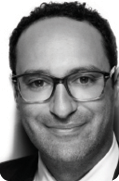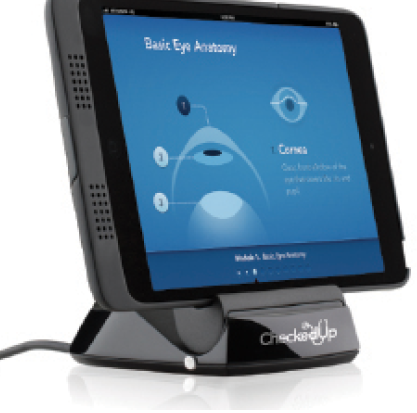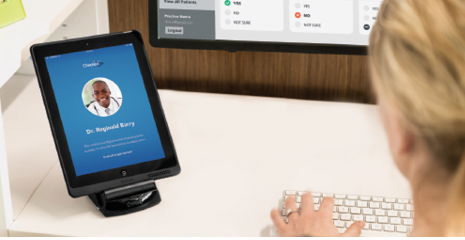
Physicians are constantly under pressure to see more patients each day, and, as a result, the volume of patients we are responsible for has gone up. Further, the amount of time per patient that a doctor can spend conducting examinations has gone down.
AT A GLANCE
• The goal of the modern practitioner is to deliver the highest-value interaction possible in the limited time he or she has with each patient.
• Good patient education allows patients to become involved in the decision-making process and to be active participants in their care, rather than passive recipients of physicians’ judgments.
• Many types of patients can benefit from the simple and engaging explanations of complex medical information that patient engagement platforms such as CheckedUp can offer.
At the same time, while these factors compel us to move patients through our practices as expeditiously as possible, it is our foremost desire to deliver the best care to our patients. The increased pressure to move patients through our workflows makes it harder for the treating physician to find out what is going on with the patient and have a value-driven conversation in which he or she is able to focus on the things that are important.
PATIENT Engagement BOLSTERS HIGHER-LEVEL CONVERSATIONS
Given these competing demands—seeing more patients versus delivering quality care—the goal of the modern practitioner becomes delivering the highest-value interaction possible in the limited time we have with each patient. Patient engagement is a way to help us take maximum advantage of our all-too-brief encounters in the examination room.
Patient engagement and education allow the doctor to have higher-level conversations with patients regarding treatment options and follow-up care, rather than spending valuable face-to-face time explaining basics, such as what a cataract is and why it forms. When effective patient education takes place before the doctor-patient encounter—before the patient even enters the practice’s doors—patients already know what a cataract is and, hopefully, are aware of some of the options our practice offers to address it. Good patient engagement allows patients to become involved in the decision-making process and to be active participants in their care, rather than passive recipients of our judgments.
For many years, our practice used traditional patient education tools, such as photocopies, brochures, and, later, DVDs. I noted over time that many of these traditional educational methods were ineffective. In the clinic, I found myself explaining things to patients and then either having them watch a DVD in the office or handing them a brochure to review at home.
By contrast, patients now use highly sophisticated information technologies every day in and outside of our offices. They carry powerful computers (called smartphones) in their pockets and purses. What if we could take advantage of patients’ increasing online savvy and Internet skills and offer them patient education resources that they can have at their fingertips? This was the impetus behind the creation of CheckedUp (see Patient Engagement Platform).
ENGAGING WITH THE CONTENT
Physicians or practices can purchase a subscription to CheckedUp, and they are then able to offer the service to their patients. When patients call expressing an interest in cataract surgery or another procedure, staff members can send them access to the platform and to relevant information before they even come to the clinic. Alternatively, patients can review the information on devices provided at the clinic (Figure 1), and access can be sent to them as a follow-up after their visit.

Figure 1. The CheckedUp app, which can be viewed by the patient at the clinic or at his or her leisure elsewhere.

Figure 2. The physician can access patient responses via CheckedUp before he or she talks to the patient.
One advantage to patient engagement platforms such as this is that patients can review the content online at their leisure. While working their way through the content, various engagement tactics are utilized, including answering questions related to their symptoms, interests, and general level of knowledge about their conditions.
The patient’s responses are then made available to the physician before he or she talks to the patient, so that the physician can better guide the conversation with the patient once they are in the examination room together (Figure 2). The physician can also customize and choose the questions that certain patients are given based on what they are interested in learning. For example, for cataract patients, the physician may want to know if they have astigmatism or what their goals for their vision are following the procedure. The physician picks the questions, the patient answers them, and the physician receives a record of the responses through a PHI/HIPAA compliant platform, so that when they meet in the clinic they have this shared knowledge.
AN IDEA WHOSE TIME HAS COME
In addition to our own practice, a number of other ophthalmology practices are currently using CheckedUp. We believe that this is a platform that could be expanded almost indefinitely to include other surgical specialties and even general medicine. Many types of patients can benefit from the simple and engaging explanations of complex medical information that this platform can offer. CheckedUp helps to make the patient experience personal and engaging, so that patients feel more comfortable and empowered about their condition or surgery. This essence of CheckedUp can easily be translated to other areas of medicine.
In the course of interacting with the platform, patients answer questions about their experience, such as, “Did this content help you understand more about your condition?” This information is fed back to CheckedUp, and, overwhelmingly, we have received positive responses from patients.
On the qualitative side, we also hear good feedback from the practices that are using the platform. They tell us that patients love it; they get this valuable information and can take it home with them and share it with their family members and other caregivers. Both of these forms of feedback lead us to believe that patients benefit from the use of CheckedUp.
No more paper brochures
Ophthalmologists have adopted highly sophisticated technologies into their practices, including complex imaging technologies that help us diagnose patients, and we purchase $500,000 lasers to treat patients. As comfortable as we have become with these systems—and as comfortable as our patients are with the advanced information technologies they use every day on their smartphones, tablets, and computers—we must ask ourselves: Why are we are still handing out paper brochures to explain intricate medical concepts? And is there a better way to help a patient understand his or her condition (and procedure) and for the health care provider to understand what a patient’s true goals are from a procedure?
We have found that most patients, even the elderly who make up a large proportion of ophthalmic practice, engage with information technology throughout their days. CheckedUp is intuitive and simple to use, as it was carefully thought out and developed with the awareness that some ophthalmology patients may not be comfortable with using technology. CheckedUp allows patients to engage family members so that they too may be educated and involved in the process of care.
The platform helps patients navigate their experience at a practice, presents the best solutions the practice has to offer, and helps to improve patient flow. This seems to present a win-win-win proposal for many contemporary ophthalmic practices.
PATIENT ENGAGEMENT PLATFORM
Richard M. Awdeh, MD
• Professor, Surgeon, and Director of Technology Transfer, Bascom Palmer Eye Institute, Miami
• Founder and CEO, iDoc
• Founder and CEO, Cirle
• richard@cirle.com
• Financial disclosure: Founder and CEO (iDoc)
